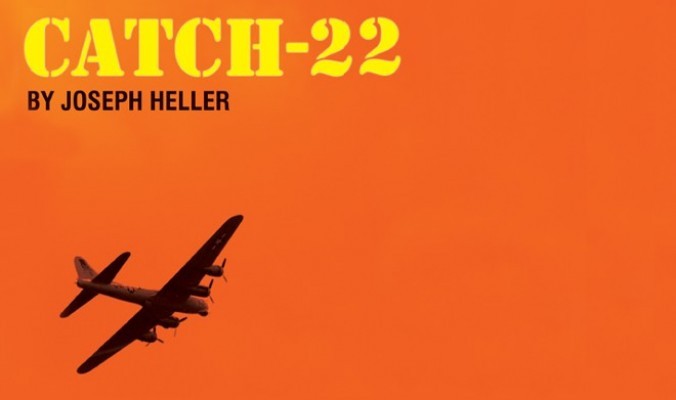Written by Ehsan Norouzi[1]
***
I read Catch 22 in high school, completely by accident. I found it in a box of books in an abandoned basement. I read it during my third-year quarterly exams, and it made me fail geometry. My ruined summer was worth my laughter while reading it, though. Amidst the structure of school and the terrifying purgatory of the pre-university year and its entrance exam, Catch 22 (Joseph Heller), The Good Soldier Švejk (Jaroslav Hašek) and other books like them provided a restless teenager like me with some respite. However, the joy of encountering Catch 22 in those teenage years, those dreamlike moments filled with satire that demanded a different kind of laughter, were the result of something else as well.
At the time, literature had not yet become my profession and reading was simply an act of pleasure, with no goal in mind. Later on, there would come a time when I couldn’t read an extraordinary sentence without thinking about how it could be translated into Persian. I lost the joy of reading.
I translated Catch 22 in the eight years that all my books piled up in the Ministry of Culture and Islamic Guidance, awaiting approvals that were endlessly postponed. Earning a living was tough for several reasons: books waited for permission for years, publishers were brought to their knees under the pressure, and the wider economic conditions were so bad that cajoling the public to read books sounded like a joke. In the same period, patients couldn’t get hold of their medication; the complaints of intellectuals about the dearth of readers and “people not buying paintings” was of the same caliber as the obscenity governing the country.
It was during this period that Behrang Kiayian (director of Cheshmeh Publication) came to me with a proposal. I couldn’t understand whether it was a result of his inexperience or of his empathy; I couldn’t figure out whether he was unaware of the risk he was taking or he simply wanted to drag me out of my misery. At a time when several of Cheshmeh’s books were banned and the future of the publishing house was up in the air, Behran Kiayiayan proposed to financially support me so that I could sit down and translate a classic work of literature, regardless of whether it would be approved for publication or not. Such a leap of faith from the publisher not only saved me from a financial crisis, but also from a psychological one.
My proposal for translating Catch 22 was welcomed. Several years of struggling over an abundance of military terms, grappling with horrendously long sentences (I am reminded of the painstaking work of Mehdi Sahabi, the translator of In Search of Lost Time) and attempting to recreate the playfulness of the original brought along both personal pains and joys. To write of them needs yet another “translation” of those moments into words. Prior to that point, I had only experienced such elation and despair when confronted with mathematical formulas.
Whether working as a writer or as a translator, I have the habit of wanting to evaluate the work from time to time by reading it to a select audience. Being so closely involved with a text necessitates stepping back and taking another look at it, to see if others see what you think you see. I sometimes read my translation of Catch 22 to my friends, to see if they would laugh where I laughed or as hard as I laughed at a certain passage. During this process, my friend and editor Nima Malek Mohammadi played, as usual, a prominent role.
Perhaps each instance of translating or writing, even those of a single sentence, means rebuilding a textual structure from scratch. To rebuild the edifice of Catch 22 in Persian would not have been possible with just one architect. Regardless of the success or failure of the present translation, the Persian Catch 22 is part of a linguistic tradition that could inevitably not have come to life without the works of those such as Mirza Habib Isfahani[2], Mohammad Ghazi[3], and Mehdi Sahabi. Even though I take full responsibility for any shortcomings in its construction, any possible success will be due to all the people who have constantly kneaded this language, each building a new structure with his/her own powers, without which Catch 22, at least in its present form, would not have become a reality.
This Persian edifice owes its existence as much to the editor, publisher, laborers at the printing house, graphic designers, and distributors as to the struggles of one person with a certain level of linguistic knowledge at a certain moment in time; perhaps in the same way that we can view the creation of its original [English] as a product of a certain time, life experience, language, and tradition. This is neither to diminish the greatness of the original Catch 22 nor to feign humility about its translation.
There is no question about the shining light of literary stars; but to find stars whose existence has some meaning to our lives, who become suns that warm us up and give us life – this is another issue altogether. The original Catch 22 has proven itself by its everlasting status, but to see where its [Persian] translation stands, we must wait and see. For now, if it makes you laugh at the mirror image of our struggles in this insane world of ours, this is more than enough for me.
Translated by Poupeh Missaghi
[1] This piece was published, in Arman-e-Emrooz newspaper, on occasion of the publication of the Persian translation of Catch 22, by Ehsan Norouzi, Cheshmeh Publication, Tehran, Winter 2015.
[2] Iranian writer and translator during the Qajar era (19th century). He is known as the father of Persian grammar.
[3] Iranian translator and writer, 1913-1998
*****
Read more from Iran:

